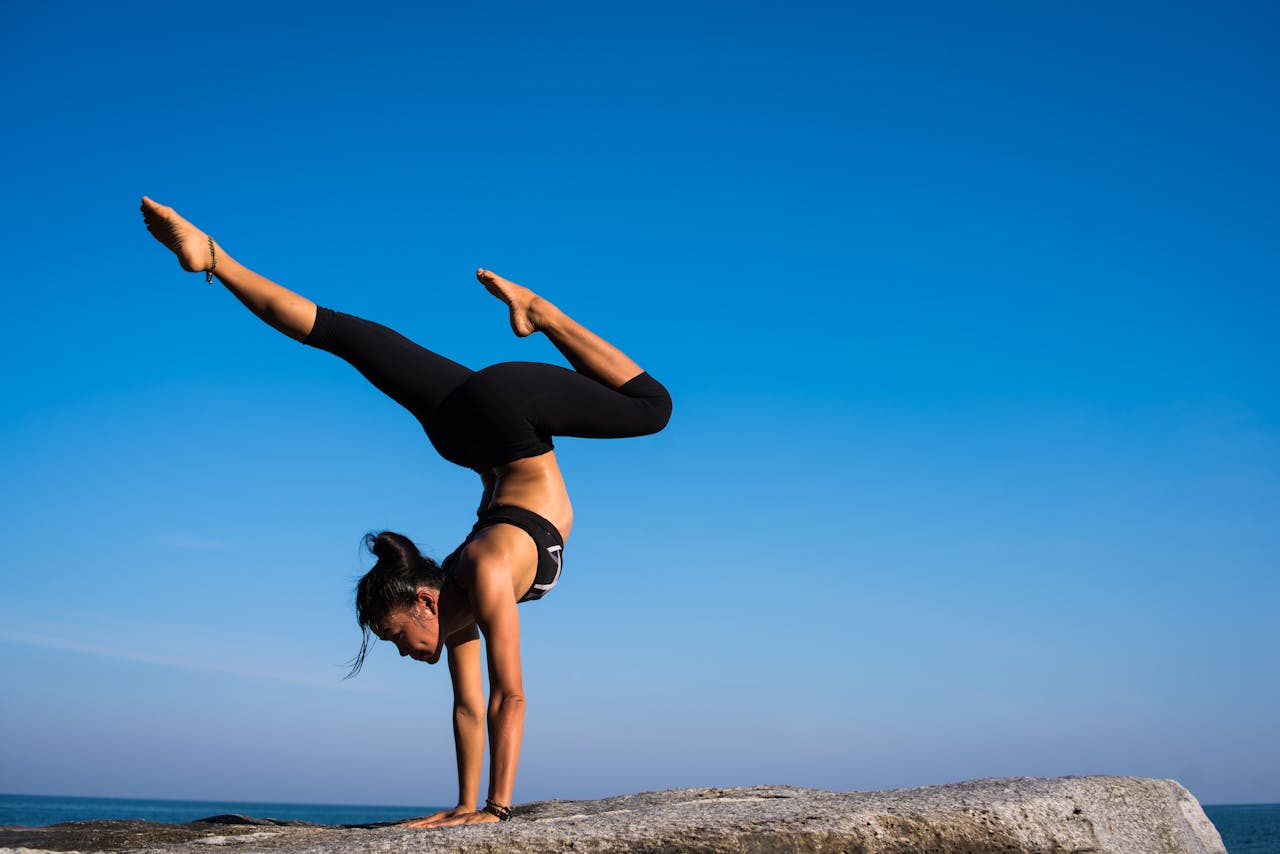Introduction: – Why Yoga Is More Than Stretching?
What is yoga? The answers can vary widely. Individuals approach yoga with
their ideas and expectations shaped by their personal needs. Some seek relief
from health issues, others seek a way to stay active, while some aim to
enhance mental skills like concentration and memory. Additionally, some
people come seeking a spiritual experience.

Most beginners misinterpret the various parts of the yoga method and
consider a specific stage to be yoga itself. If you think yoga is only about
bending your body or doing tough poses, you’re missing out on the bigger
picture. Asanas, Pranayamas, Meditation, etc., are different limbs of yoga- but
they are not yoga alone.
In this beginner-friendly guide, we’ll explore the meaning of yoga, its origins,
types, and benefits.
Yoga is an ancient practice from India that helps bring harmony to your body,
mind, and soul. Over the last few decades, yoga has gone global. People from
all walks of life practice yoga for better health, mental peace, and spiritual
growth. But if you’re wondering, what is yoga all about? This guide is for you.
What Is Yoga? Or a better question is, What exactly is yoga ?
The word”Yoga” comes from the ancient Sanskrit word “Yuj,” which
means to unite or join. Yoga is a way of life, an experiential science. It
is impossible to succeed in this direction with a great deal of
theoretical discussion. It takes rigorous, committed, focused practice
with the appropriate mindset.
Yoga is a practice that promotes the integration of the divine soul
within us. It is about creating a union between your body, your
breath, your mind, and the universal energy around you. It helps you
connect with yourself on a deeper level.
A Brief History of Yoga (Secondary Keyword: history of yoga)
Yoga isn’t a new trend. It’s over 5,000 years old! It started in ancient
India as a spiritual and philosophical practice. In the Vedic period,
yoga was mentioned in scriptures like the Rig Veda. About 2,000
years ago, Maharishi Patanjali assembled the System of Yoga and
presented it in his Yoga Sutras.
To achieve the desired outcome, the different parts of this system
were put together in a specific sequence. This can be viewed as a
methodical way to reach self-awareness; each step relies on the
previous one, setting the stage for the next. Skipping any part of the
process would hinder progress; for instance, individuals might try
yoga without focusing on the proper techniques and ultimately fall
short.
Although regular practice of asanas and pranayama can result in a
robust and healthy body, this condition will be affected if one
neglects to control their mind.
The first step in this journey is mastering your mind. Similarly, if
someone doesn’t first manage their moral and mental outlook and
actions through the foundational practices of yamas and niyamas,
they won’t achieve success, even if they meditate diligently every
day.
Over time, yoga branched into different schools of thought and
practice, including Hatha Yoga, Bhakti Yoga (path of devotion), Karma
Yoga (path of action), and Jnana Yoga (path of knowledge).
Today, yoga has been embraced worldwide, not just as a spiritual
tool, but also as a wellness and fitness discipline.
The 8 Limbs of Yoga (Ashtanga Yoga)
According to Patanjali, yoga is an 8-fold path that includes:
- Yama – ethical disciplines (truth, non-violence)
- Niyama – personal observances (cleanliness, contentmentAsana – physical postures
- Pranayama – breath control
- Pratyahara – withdrawal of senses
- Dharana – concentration
- Dhyana – meditation
- Samadhi – enlightenment or bliss
When you practice yoga, you are engaging with more than
exercise—you are on a path to holistic well-being.
Benefits of Yoga: Why Millions Swear by It
Yoga has countless benefits—physically, mentally, and emotionally:
Physical Benefits:
- Improves flexibility and balance
- Builds strength and muscle tone
- Enhances posture and spinal alignment
- Supports heart and lung health
Mental & Emotional Benefits:
- Reduces stress and anxiety
- Increases mindfulness and focus
- Promotes emotional stability
- Helps with depression and fatigue
Spiritual Benefits:
- Encourages self-awareness and inner peace
- Deepens connection to self and universe
- Offers clarity and purpose
Types of Yoga (Keyword: types of yoga)
If you’re new to yoga, you might be surprised at how many styles
there are. Each one has its own benefits and focus.
- Hatha Yoga – Great for beginners. Focuses on basic postures
- and breathing.
- Vinyasa Yoga – A dynamic flow where one pose connects to the
- next with breath.
- Ashtanga Yoga – A set sequence of intense, athletic poses.Iyengar Yoga – Focuses on alignment and precision, using
- props.
- Kundalini Yoga – Combines movement, mantra, and breath to
- awaken energy.
- Yin Yoga – Slow and calming, with deep stretching held for
- minutes.
- Power Yoga – Fast-paced and fitness-focused.
Is Yoga for Everyone?
Absolutely! One of the best things about yoga is that it’s for
everyone, no matter your age, body type, fitness level, or religion.
You don’t need to be flexible or athletic to start yoga. Yoga meets
you exactly where you are.
From children to senior citizens, office workers to athletes, yoga has
something to offer everyone. You can start anytime and grow at your
own pace.
Conclusion: Yoga Is a Journey, Not a Destination
Yoga isn’t just about touching your toes or doing complex poses. At
its core, yoga is about connection — connection to yourself, to
others, and to the universe. It brings awareness to every action and
thought, guiding you toward harmony and self-realization. Whether
you want to get fit, reduce stress, or explore your inner self, yoga has
a path for you. You don’t have to be perfect or experienced to begin.
Just start where you are, stay consistent, and keep learning.

